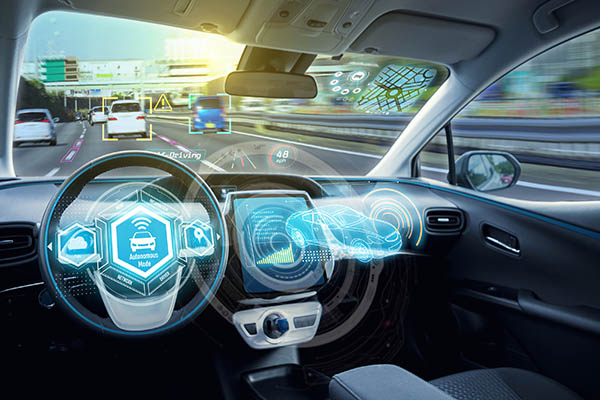In the dynamic world of automotive, where innovation is the driving force, one technological aspect has emerged as a catalyst for transformation – advanced memory systems (AMS). These intricate systems are amending the rules of automotive performance, elevating safety, efficiency, and driving experience to new heights. From electric vehicles (EVs) to autonomous driving and in-car entertainment, AMS are revolutionising automotive performance, propelling the industry into an era of unprecedented capabilities and possibilities. AMS is expected to play a revolutionary role in shaping the career landscape, offering aspiring professionals unparalleled opportunities to contribute to the evolution of the automotive industry.
The Foundation of Innovation
At the heart of any technological advancement lies the ability to store, access, and process data swiftly and efficiently. This principle is no different when it comes to the automotive industry. AMS, which include various forms of non-volatile memory (NVM) like NAND flash, NOR flash, and emerging technologies such as MRAM (Magneto-resistive Random Access Memory), are reshaping how vehicles operate on multiple fronts.
One of the most significant areas where advanced memory systems are making a transformative impact is in EVs. The rapid shift towards sustainable transportation has propelled the demand for high-capacity and high-speed memory solutions. EVs rely heavily on sophisticated battery management systems, motor control units, and infotainment systems, all of which require reliable and efficient memory for seamless operation.
Empowering Electric Mobility: A Symphony of Components
Electric vehicles are rewriting the rules of mobility, and AMS lie at the intersection of their success. Beyond reducing emissions, EVs offer exhilarating acceleration and torque characteristics that redefine driving. Memory systems are instrumental in orchestrating the seamless synergy between electric propulsion, battery management, and real-time data processing.
The remarkable acceleration capabilities of EVs are facilitated by the harmonious choreography of memory systems. These systems enable rapid communication between vehicle components, ensuring efficient power distribution and optimal vehicle dynamics. Consequently, EVs provide not only thrilling performance but also heightened energy efficiency and prolonged component life.
Battery management, a critical aspect of electric mobility, is revolutionised by AMS. These systems meticulously record and analyse battery data, including charging cycles, cell health, and thermal conditions. Such insights empower manufacturers to design batteries that are not only robust but also offer longevity, safety, and sustained performance. This results in a more reliable, efficient, and dependable electric driving experience.
Autonomous Prowess: Memory Systems Driving Self-Driving Vehicles
The pursuit of autonomous driving is reshaping the automotive landscape, and memory systems are at the forefront of this seismic shift. Autonomous vehicles rely on a complex symphony of sensors, cameras, and processors to navigate the world, and memory systems serve as the conductor, orchestrating the intricate data flow that underpins real-time decision-making.
AMS enable the rapid processing and storage of vast amounts of data generated by sensors and perception systems. This data is the lifeblood of autonomous vehicles, enabling them to make split-second decisions, navigate complex environments, and ensure passenger safety. In essence, memory systems transform the vision of autonomous driving into a tangible reality.
Memory systems also play a pivotal role in refining autonomous algorithms. By recording and storing a comprehensive history of a vehicle’s actions and decisions, memory systems empower manufacturers to fine-tune algorithms and enhance overall system reliability. As a result, memory systems not only drive innovation but also accelerate the safe and efficient adoption of self-driving technology.
Seamless Connectivity and Entertainment: Memory’s Embrace
As vehicles metamorphose into hubs of connectivity and entertainment, memory systems are at the forefront of this transformation. The seamless integration between the digital and physical realms within a vehicle’s interior is driven by AMS, enhancing the driving experience, and ensuring uninterrupted access to a multitude of features.
Infotainment systems, touchscreens, voice recognition, and navigation services have become staples of modern driving. These features rely on AMS for rapid data retrieval and efficient data processing. The result is a driving environment where drivers and passengers can seamlessly access their favorite media, applications, and services.
The proliferation of wireless connectivity has also been made possible by memory systems. These systems facilitate robust integration between the vehicle’s systems and external devices, such as smartphones and wearables. The vehicle becomes an extension of the driver’s digital lifestyle, enabling hands-free communication, music streaming, and access to navigation services.
Latest advancements in automotive memory technology
Recent advancements in automotive memory technology have led to the development of memory solutions that offer higher performance, reliability, and safety. Here are some of the latest advancements in automotive memory technology:
- New Memory Chips: New memory chips have been developed that highlight the advancements in memory technology for industrial applications. These chips offer higher bandwidth, lower latency, and lower power consumption, making them ideal for use in automotive applications.
- Advanced DRAM and Flash Memory: These memory solutions provide high-speed data transfer rates, high-capacity storage, and robust safety features, ensuring optimal system performance without compromising safety.
- Reliable Memory Devices: Reliable and high-quality memory devices are required for all automotive needs, including serial EEPROMs, SRAMs, EERAMs, and flash memories. These memory solutions are designed to meet the demanding performance requirements of automotive systems, providing high bandwidth, low latency, and low power consumption.
- SDRAM, DDR, DDR2, DDR3, and DDR4: SDRAM, DDR, DDR2, DDR3, and DDR4 memory solutionss deliver the requisite bandwidth, latency, and power required for automotive applications. These memory solutions are designed to meet the specific requirements of the automotive industry, providing high performance, reliability, and safety.
ASDC: Shaping the Future of Automotive Talent
Amid this automotive revolution, Automotive Skills Development Council (ASDC) stands as a beacon of opportunity for aspiring professionals seeking to make their mark on this dynamic industry. ASDC has initiated various programs and collaborations with industry manufacturers, training partners, and academic institutions to upgrade the skills of the workforce for the EV industry. One of ASDC’s initiatives is the Electric Mobility Nanodegree Programme, a six-month program in collaboration with DIYguru. This program is designed for individuals with an engineering or diploma background who want to learn about the latest technologies in electric mobility.
Another ASDC initiative is the Dakshta training program, in partnership with Autobot India and MG Motor. This program focuses on artificial intelligence and EVs, and it prepares participants for careers in the rapidly growing EV sector. Autobot Academy has also introduced a program called “EV Engineering: Architecture and Components.” This program is designed to future-proof job seekers in the EV technology sector by giving them the skills they need to design and build EVs.
ASDC is committed to staying current with industry advancements, and this ensures that its curriculum remains relevant and equips workers with the latest skills. In addition to its own programs, ASDC also partners with other organisations to provide training and development opportunities for the EV workforce.
Paving the Path: Career Opportunities and Beyond
As the automotive industry embraces the era of AMS, a myriad of career opportunities unfurls for candidates who are passionate about shaping the future. The intersection of automotive engineering and memory technology has created a demand for skilled professionals who can design, develop, and implement these intricate systems.
Candidates who embark on a journey to specialise in automotive memory systems can look forward to a career filled with innovation, challenges, and meaningful contributions. The automotive landscape is in a constant state of flux, and professionals proficient in AMS are well-positioned to drive the industry forward, contributing to the design of vehicles that are safer, more efficient, and more connected than ever before.
Conclusion: The Road Ahead
As the automotive landscape continues to evolve, memory systems will remain at the forefront of innovation, shaping vehicles that are safer, more efficient, and more connected than ever before. Through their remarkable capacity to store, process, and retrieve data swiftly and efficiently, advanced memory systems are undeniably revolutionising automotive performance, steering the industry towards a new horizon of possibilities. ASDC recognises the transformative potential of AMS and the profound opportunities they present for aspiring professionals.












